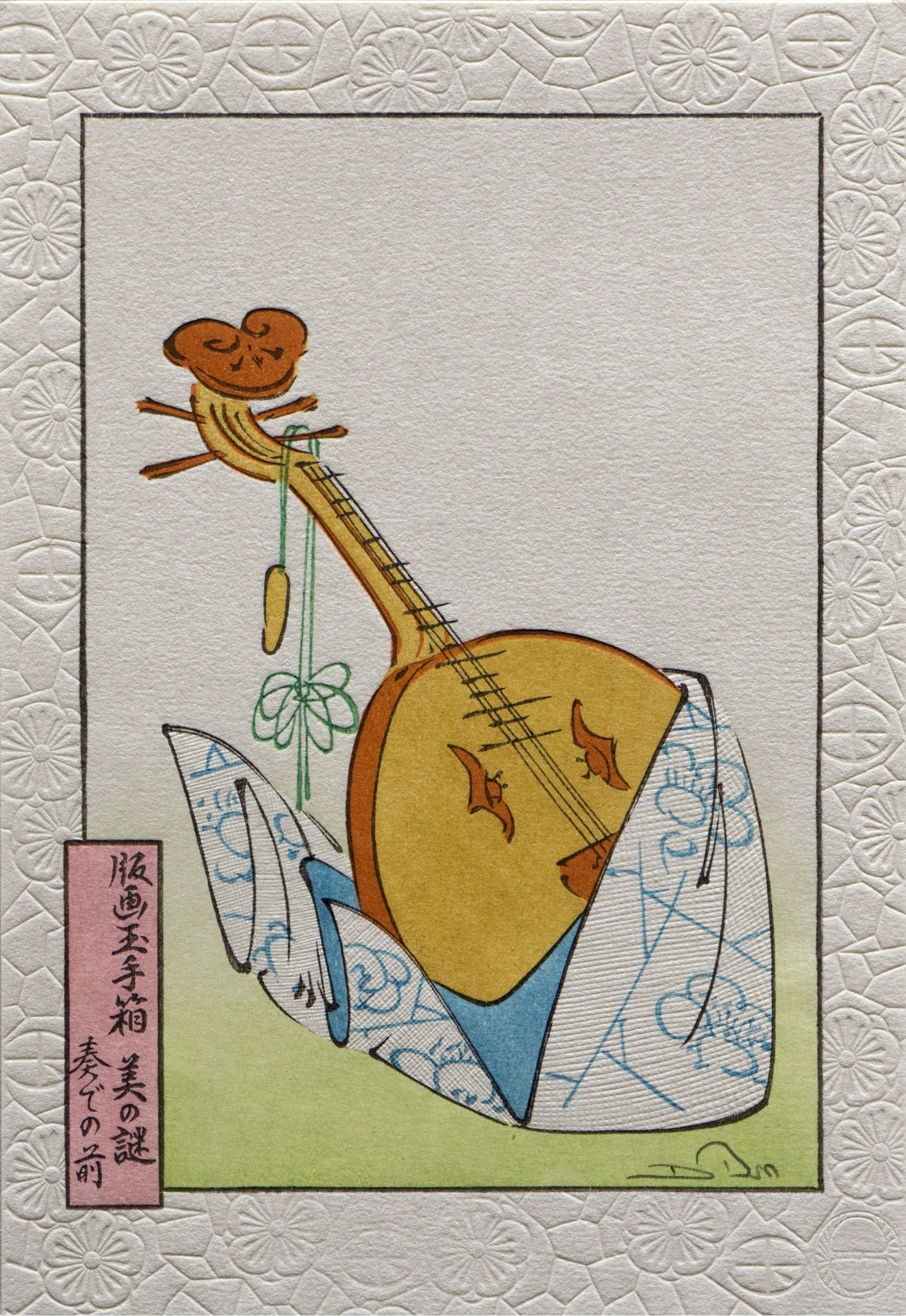Data
Description
When planning this Mystique series, and describing it to people around me, I emphasized that it would be a set of designs that would instruct people about many of the specific techniques used to make Japanese prints. But looking back over the stories for the prints produced to date - I see that I haven't actually discussed very many of these technical points, even though they are of course there in the prints.
I didn't tell you about the ichi moji bokashi in the sky of print #1, the Hiroshige design ('a thin horizontal gradation in the shape of the Chinese character for 'one'), or the ke nuki awase in the sky of #5, the Hasui design ('colours which abut so tightly that a hair could not slip between them'). There simply hasn't been space for those details in the stories! And to tell the truth, I have been somewhat nervous of putting in too much technical information, as I know that many of the collectors simply wish to enjoy the prints without feeling that they are 'studying'!
I bring this up now because there is also a clear technical point to be observed on this print; you can see it on the cloth in which the lute is wrapped. This is the nuno me zuri - printing to imitate a piece of fabric. Compared to the vivid embossing around the borders of the print it is more subtle, and might even go unnoticed at first, especially if the light on the print is direct, but it definitely adds a touch of interest to this quiet 'still life' type of design. Actually, I have to admit that this effect was not present on the original print that I reproduced, but couldn't resist adding it here.
The original was a poetry surimono that seems to have been produced in the late 19th century. I do not know who drew the image, but it was probably supplied by one of the members of the circle that commissioned the surimono, which included a number of their poems. We also know absolutely nothing about the workshop that did the work for them - the carving and printing - as this sort of information was considered of absolutely no interest to anybody! The print survives, but information on who made it is lost.
Will that be my fate too?
David
Other prints in this set
-
 Mystique of the Japanese Print
Mystique of the Japanese Print
-
 Mt. Fuji from Lake Kawaguchi
Mt. Fuji from Lake Kawaguchi
-
 Kabuki Actor
Kabuki Actor
-
 Hydrangea in Rain
Hydrangea in Rain
-
 Young Girl
Young Girl
-
 Mt. Unzen
Mt. Unzen
-
 Needlework
Needlework
-
 Late Autumn
Late Autumn
-
 Japanese Lute
Japanese Lute
-
 Moon of Enlightenment
Moon of Enlightenment
-
 Winter Ferry
Winter Ferry
-
 Urashima Taro
Urashima Taro
-
 Still Life with Fugu
Still Life with Fugu
-
 Itinerant Dancer
Itinerant Dancer
-
 Meiji Patterns
Meiji Patterns
-
 Ukiyo-e Beauty
Ukiyo-e Beauty
-
 Chinese Woodblock Print
Chinese Woodblock Print
-
 Parrot and Acorns
Parrot and Acorns
-
 Mt. Fuji in a Window
Mt. Fuji in a Window


